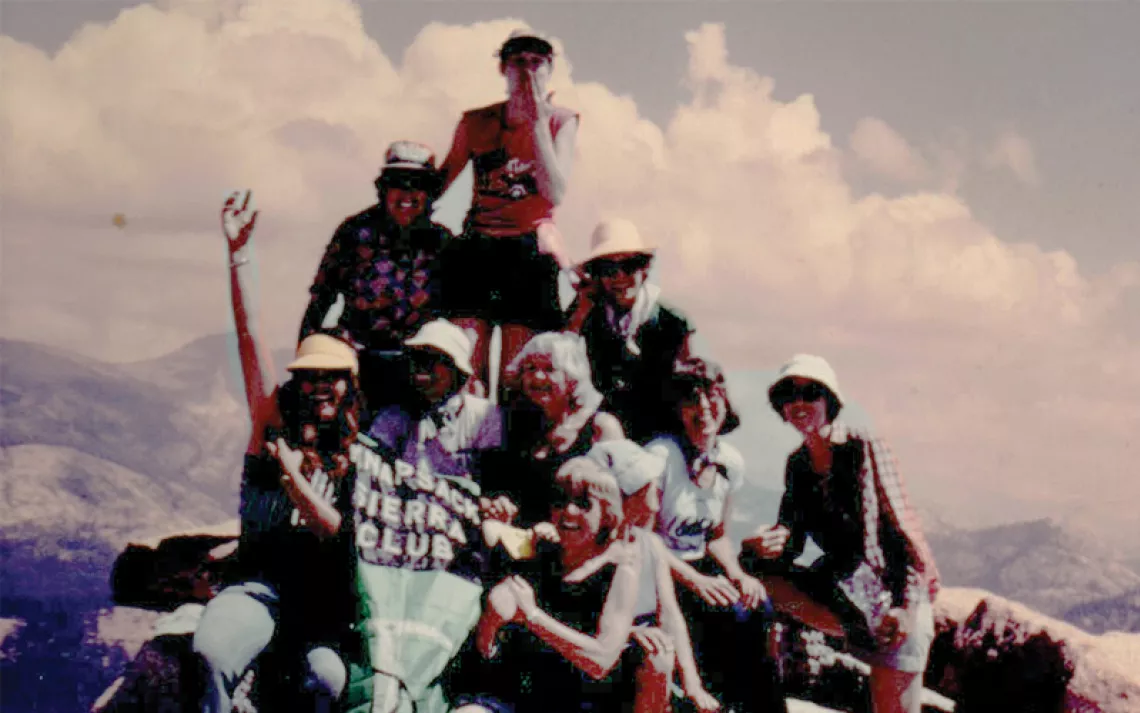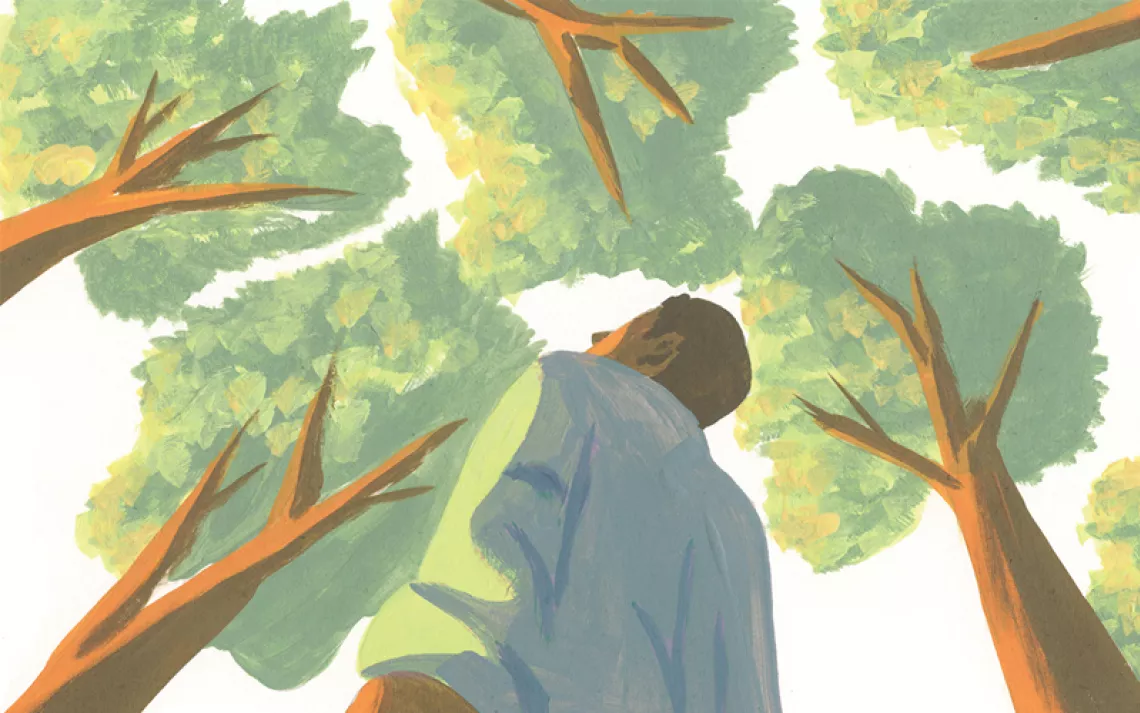Can Extreme Sports Treat Anxiety?
Turns out a little adrenaline can calm you down

Photos courtesy of Kate Morgan
Getting caught in the hydraulic of a Class V rapid is a lot like how I imagine it’d be to get trapped in a washing machine. You somersault underwater for what feels like several minutes, experiencing alternating flashes of sky and rocky river bed. It’s almost hypnotic, until you remember you need to breathe.
By the time my rafting guide hauled me out of West Virginia’s Gauley River by the straps of my personal flotation device (don’t call it a life jacket; it won’t really save your life), I was sufficiently shaken up. It was August and the Upper Gauley was running at low water. “You’ve got to come back,” the guides kept saying, “during Gauley Season.” Every September, the Army Corps of Engineers drains nearby Summersville Lake over the course of six weekends. For those six weeks, the Gauley runs at 2,800 cubic feet per second or more—imagine 3,000 basketballs of water rushing at your face every second. If you’re into that sort of thing, a lot of water means a lot of fun.
Call it serendipity, but one of the river’s major outfitters, Adventures on the Gorge, reached out to me soon afterward with an invitation to experience Gauley Season. And so, in September, I was back, standing ankle deep in 55-degree water and doing breathing exercises to fend off the panic attack building up in my belly. I kept flashing back to that first trip—the sight of my raft flipping over in slow motion, the force of the water, and the thoughts of everything that could’ve gone really, really wrong.
 Twenty minutes later I was laughing with joy as I rode a roller coaster of rapids bearing names like Insignificant (it is not) and Pure Screaming Hell. The panic attack I was so worried about never came. For me, this kind of high-risk, higher-reward activity controls my chronic anxiety and depression in ways yoga and meditation never have. That’s because adrenaline can be one hell of a mood stabilizer. It may seem counterintuitive, but studies suggest doing something that scares you, especially when that something is an outdoor activity, can complement more traditional anxiety and depression treatments.
Twenty minutes later I was laughing with joy as I rode a roller coaster of rapids bearing names like Insignificant (it is not) and Pure Screaming Hell. The panic attack I was so worried about never came. For me, this kind of high-risk, higher-reward activity controls my chronic anxiety and depression in ways yoga and meditation never have. That’s because adrenaline can be one hell of a mood stabilizer. It may seem counterintuitive, but studies suggest doing something that scares you, especially when that something is an outdoor activity, can complement more traditional anxiety and depression treatments.
In a 2017 study, for instance, researchers at the University of Erlangen-Nuremberg used the Beck Depression Inventory to track rates of depression in people who went bouldering for three hours a week over the course of two months. After finding that the activity improved scores significantly, researcher Eva-Maria Stelzer determined that bouldering, like many similar activities, positively impacts anxiety and depression because it keeps your thoughts from spinning out of control.
“You have to be mindful and focused on the moment,” she said. “It does not leave much room to let your mind wander on things that may be going on in your life—you have to focus on not falling.”
I had my first taste of this kind of adrenaline-induced anxiety relief a few years ago, when a friend and I nabbed a Groupon for a top-rope climbing workshop at a crag along the Susquehanna River in central Pennsylvania. After a quick lesson on belaying and 15 minutes struggling to mimic the instructor’s knot-tying technique, I started my first-ever climb.
I wasn’t particularly good at it, and I definitely wasn’t loving the toe-pinching tightness of my borrowed climbing shoes, but still, I didn’t want to come down. For the first time in a long, long time, my mind wasn’t racing. I wasn’t mentally running down an impossible to-do list, or spiraling over the impossibility of completing it. I wasn’t worrying about how I looked, or whether the thing I’d just said was dumb. I was thinking about the next hand hold, and there was no room in my head for anything else. It was like hitting a reset button in my brain.
In 2012, researchers Eric Brymer and Robert Schweitzer studied the phenomenon of extreme athletes who view the scariest moments of their pursuits as the most life-affirming. They gathered data from B.A.S.E. jumpers, extreme skiers, waterfall kayakers, big wave surfers, and mountaineers to debunk the ideas that the athletes either don’t experience fear the way the rest of us do or else had some kind of death wish. Rather, they found that every participant in the study indeed felt afraid. By embracing and pushing through it, their study concluded, “The individual is able to experience a new sense of self which transcends fear.” Once participants harnessed the adrenaline, the activity became what Brymer and Schweitzer called a “liberating, transformative” experience.
None of this is to say that depression and anxiety can be cured by buying an adventure Groupon or grabbing a rafting paddle. But it might bring you—as it does me—a few hours of sweet relief. After all, science has long shown that just being outside makes a considerable impact on our mental state—a 2012 study at the Rotman Research Institute at Baycrest, Canada, measured the baseline mood of adults with major depressive disorder, then sent them out for a walk in the woods. The participants demonstrated significant improvements in mood after returning to the lab, and the researchers ultimately concluded that interactions with nature could be used to supplement existing clinical treatments for depression.
It is also, it turns out, a great idea to induce a little adrenaline in children. My anxiety’s been ruining days and keeping me up at night since I was in middle school—which is not unusual. Many anxiety disorders develop in adolescence or even younger, and they have a tendency to persist into adulthood.
In 2017, a University of Amsterdam team recruited 312 Dutch and Australian families to study how Challenging Parent Behavior (CPB)—a parenting style that encourages kids to engage in physical activity and risks that push their limits—affected the development of childhood anxiety disorders in their kids down the line. Maybe it’s no surprise that kids who developed a willingness to take on a little bit of risk in the name of fun were far less likely to develop anxiety. In fact, the researchers concluded that a CPB parenting style was a preventative measure against childhood anxiety disorders.
Whether you’re trying to prevent or alleviate anxiety and depression, it’s always going to be a good idea to go outside. Encourage kids to climb, and jump, and paddle—harnessed and helmeted, of course. And, even if you’re afraid, consider joining them. You, too, may find that the best thing you can do for your mental health is to take a deep breath and a big leap.
 The Magazine of The Sierra Club
The Magazine of The Sierra Club



